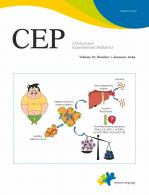Coronavirus disease 2019 (COVID-19) infection or vaccination is reportedly associated with kidney diseases such as acute kidney injury (AKI), proteinuria, nephrotic syndrome, hematuria, immunoglobulin A (IgA) nephropathy, and other glomerulopathies [1]. AKI is a known complication of COVID-19 infection, especially among critically ill patients [1,2]. AKI could be caused by COVID-19-associated glomerulopathy or systemic conditions such as dehydration, hemodynamic instability, rhabdomyolysis, and nephrotoxic drugs [2].
Monitoring kidney function (via urine output, blood pressure, serum creatinine, urinalysis, etc.) is mandatory among all hospitalized COVID-19 patients [2]. In outpatient clinics, making the early diagnosis of AKI in COVID-19 patients with only respiratory symptoms can be difficult. Inquiring about a patient’s urine output, hydration status, edema, gross hematuria, foamy urine, and medication history may support the diagnosis. Patients with AKI may have only nonspecific systemic symptoms. Assessing the potential risk factors for COVID-19-induced AKI, such as infection severity, nonrespiratory organ involvement, a high body mass index, hypertension, diabetes mellitus, and cardiovascular disease, might also be helpful [2]. Serum creatinine levels and urinalysis findings in patients with prolonged COVID- 19 symptoms might also be considered.
Treatments for COVID-19-induced AKI are identical to those of other causes [2]. Fluid management should be individualized to avoid both overhydration and hypovolemia. The use of nephrotoxic drugs should be minimized and appropriately monitored. Particular caution is needed in transplant recipients taking calcineurin inhibitors (CNI) when antiviral agents targeting COVID-19 are used, such as nirmatrelvir/ritonavir, which inhibits P-glycoprotein and CYP3A4 and increases the risk of CNI-toxicity-associated AKI [3]. Kidney replacement therapy can be applied when needed.
COVID-19 infection or vaccination is reportedly associated with hematuria, proteinuria, and other glomerulopathies [1]. There might be a contrary opinion that COVID-19 infection or vaccination is not a cause of kidney disease but rather a coincident factor. Some studies have reported viral particles in the kidney [2]; however, establishing a direct causal link is problematic.
A possible pathogenesis involves dysregulated T-cell responses, proinflammatory cytokines, or molecular mimicry [4]. A delayed hypersensitivity reaction might be involved in vaccine-induced cases [4]. Respiratory viral disease or vaccination-associated inflammatory processes are well-known common triggering factors in kidney diseases such as nephrotic syndrome and IgA nephropathy [5,6].
The problem is whether COVID-19-associated kidney disease differs from other viral infection-associated kidney diseases such as influenza. Prior to availability of the vaccine, COVID-19 was notorious for its high infectivity and fatality rates among hospitalized patients [7]. Still, the known higher virulence did not appear associated with worse kidney disease.
Children with nephrotic syndrome reportedly show a similar relapse rate of proteinuria to that of the pre-COVID- 19 pandemic [1]. A weak point in simply comparing the relapse rate to the pre-COVID-19 era is that overall viral infection rates (a classic risk factor for relapse) dramatically decreased after the COVID-19 outbreak because of quarantine procedures such as keeping one’s distance and wearing a mask [8]. However, it is difficult to compare the effect of each viral infection on kidney disease. Further studies are required to evaluate the role of COVID-19 in kidney disease. However, a more confusing factor is that COVID-19 virulence constantly changes due to the emergence of variant forms and vaccination.
Klomjit et al. [9] recently analyzed the peer-reviewed literature on COVID-19-associated kidney pathology and reported that collapsing glomerulopathy (CG) was the most prevalent pathology (36%). CG is a focal segmental glomerulosclerosis with characteristic glomerular basement membrane collapse, podocyte hypertrophy, and hyperplasia. CG is diagnosed in individuals of African-American or Hispanic descent and associated with the apolipoprotein L1 (APOL1) variant. The high-risk APOL1 genotype is reportedly related to several viral infection-associated nephropathies, such as cytomegalovirus, parvovirus B19, Epstein-Barr virus, and human immunodeficiency virus. CG in COVID-19 patients with the APOL1 variant was named COVID-19-associated nephropathy (COVAN). However, COVAN has not yet been reported in Asian or pediatric populations.
Additional COVID-19 vaccinations, such as yearly booster shots, are usually recommended in patients with COVID-19 infection or vaccine-associated glomerulopathy [10]: for example, patients with minimal change disease respond well to treatment or develop only self-limited IgA nephropathy. Patients receiving maintenance immunosuppressive therapy may also experience less severe inflammatory reactions to the vaccine. Close monitoring after vaccination may be helpful for the early diagnosis and treatment of probable recurrence. However, the decision must be made carefully and individualized with consideration of glomerular disease severity. Avoiding other vaccination strategies may be considered in patients with rapidly progressive glomerular disease.





 PDF Links
PDF Links PubReader
PubReader ePub Link
ePub Link PubMed
PubMed Download Citation
Download Citation


